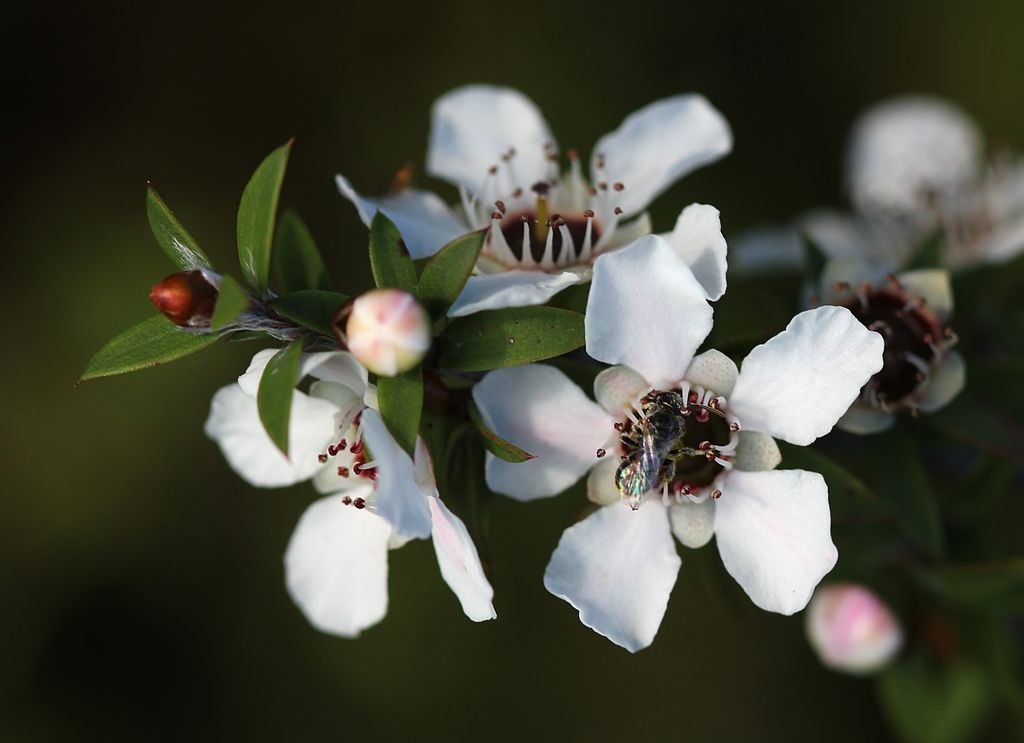
Combining Manuka honey with a common drug was able to help clear a bacterial infection that’s drug resistant and occasionally lethal.
Furthermore the addition of the honey seemed to ameliorate harmful side effects of the drug, as well as significantly reduce the necessary dosage used in the treatment.
Manuka honey, made in Australia and New Zealand from bees browsing on the Leptospermum scoparium tree, is long known to have wide ranging medicinal properties, but more recently has been identified for its broad spectrum antimicrobial activity.
Now scientists have found that manuka honey has the potential to kill a number of drug resistant bacterial infections such as Mycobacterium abscessus—which usually affects patients with cystic fibrosis (CF) or bronchiectasis.
According to the Cystic Fibrosis Trust UK, CF is a genetic condition affecting around 10,800 people—one in every 2,500 babies born in the UK, and there are more than 100,000 people with it worldwide.
The incurable condition manifests in the inability to produce mucus and other secretions of the correct density. They’re too thick, and this results in frequent lung infections.
In the study, the researchers used samples of the bacteria Mycobacterium abscessus taken from 16 infected CF patients. They then tested the antibiotic amikacin, combined with manuka honey, to discover what dosage was required to kill the bacteria.
As part of the study the team used a lab-based lung model and nebulizer, a device that produces a fine spray of liquid often used for inhaling a medicinal drug. By nebulizing manuka honey and amikacin together, they found they could improve bacterial clearance, even when using lower doses of amikacin.
Mycobacterium abscessus infects 13% of all UK patients CF, and this new approach is advantageous not only because it has the potential to kill off a highly drug-resistant infection, but because it requires less amikacin to get the job done, resulting in much-less severe side effects.
CHECK OUT: ‘Stingless Bees’ Bring Life Back to the Amazon With Medicinal Honey and New Income
Currently, patients are given a cocktail of antibiotics, consisting of 12 months or more of antimicrobial chemotherapy and often doesn’t result in a cure. The dosage of amikacin usually used on a patient to kill the infection is 16 micrograms per milliliter.
But the researchers found that with the addition of manuka honey, a dosage of just 2 micrograms per milliliter of amikacin—one eighth the normal dosage—was required.
“By combining a totally natural ingredient such as manuka honey with amikacin, one of the most important yet toxic drugs used for treating Mycobacterium abscessus, we have found a way to potentially kill off these bacteria with eight times less drug than before,” said Dr. Jonathan Cox, a lecturer and co-author from Aston University.
SIMILAR: The Impressive Medicinal Value of the OTHER Bee Products – and the Honey, Too
“This has the potential to significantly reduce amikacin-associated hearing loss and greatly improve the quality of life of so many patients—particularly those with cystic fibrosis.”
“I am delighted with the outcome of this research because it paves the way for future experiments and we hope that with funding we can move towards clinical trials that could result in a change in strategy for the treatment of this debilitating infection.”
STICK This Great Natural Health News On Your Social Media Wall…



















